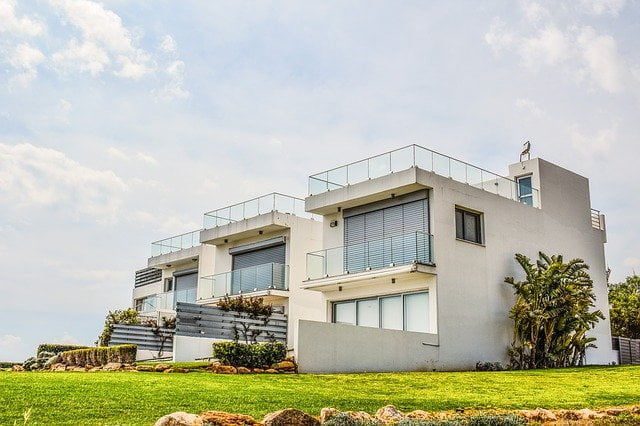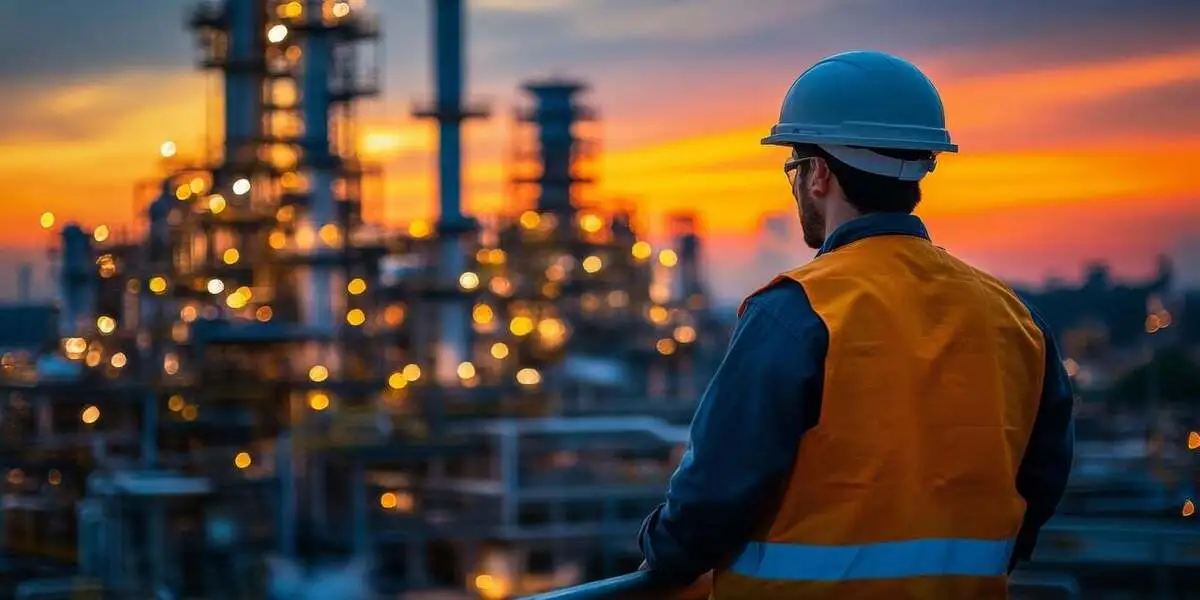The basic function of buildings is to provide structurally sound and environmentally controlled spaces to house and protect occupants and contents.
A building is a structure with a roof and walls standing more or less permanently in one place, such as a house or factory.
In this article, we will highlight some of the factors that determine how buildings are constructed. A brief overview of the function of buildings and their performance leads to a discussion about environmental factors and sustainable building.
This is followed by a description of the general principles of construction, concluding with some comments on legislation, sources of information, and making informed choices.
Read More: The Best Engineering Websites Specifically for Engineers
Table of Contents
Function of buildings and their performance
Buildings are constructed, altered, upgraded, restored, or demolished for a variety of reasons. Whether the aim is simply to provide more space or to make a financial gain from speculative development, all building projects need to fulfill a function and meet set performance criteria, no matter how fundamental or sophisticated the client’s requirements may be.
Buildings, regardless of function, will have an impact (either positive or negative) on the environment throughout their entire life.
The environmental impact will be influenced by many factors, such as the responsible sourcing and manufacturing of environmentally sustainable materials and building products; the decisions taken during the construction process; the actions of owners and occupants through a long period of use, reuse, alteration, and repair; through to deconstruction at the end of the building’s useful life.

At this ‘final’ stage many materials and components can be recovered and reused, or recycled for use in new building products, helping to reduce the amount of material sent to landfills and improving the environmental impact of buildings.
The environmental performance of buildings is an important consideration for all building projects, be they new builds or work on existing structures.
Read More: What is Research Methodology?: The Ultimate Engineer’s Guide
Function of buildings
The primary function of a building is to provide shelter from our weather, a container for living, working, and playing in. The principal functional requirements include:
- Shelter
- Security
- Safety (and comfort)
- Ease of use and operation (functionality)
- Ease of maintenance, periodic repair, and replacement/upgrading
- Adaptability and durability
- Ability to reuse and recycle materials and components at a future date
The overall goal is to achieve these functions in an economical, safe, and timely fashion using the most appropriate resources available and with a minimal negative impact on the environment.
Performance of buildings
Building performance is an attribute of a building that expresses how well that building carries out its functions. It may also relate to the performance of the building construction process.
The performance of the building will be determined by several interrelated factors set by the client, legislation, and society. Clients’ performance requirements will vary from project to project. However, the main considerations are likely to be:
- Space, determined by a figure for floor area and/or volume (and related to anticipated
- use)
- Thermal and acoustic performance (the quality of the indoor climate)
- Design life and service life of the building and specific building elements
- Cost of construction, the cost in use, and the cost of demolition/deconstruction and recycling
- Quality of the finished building (functionality and durability)
- The appearance of the finished building
- Environmental impact
Other specific performance criteria will relate to the use of the building, for example, the provision of special work surfaces for catering establishments. Legislative performance requirements are set out in building codes and regulations. Specific performance requirements, for example, the thermal insulation of walls and fire protection of doors, must be met or bettered in the proposed construction method.
Also Read: What is a Bridge?: A Complete Guide To Engineers
Quality of buildings
Function and performance will influence the quality of the building. The quality of the completed building, as well as the process that brings it about, will also be determined by the quality of thought behind the design process, the quality of the materials and products specified, and the quality of the work undertaken.
There are several different quality issues:
(1) Quality control is a managerial tool that ensures both work and products conform to predetermined performance specifications. Getting the performance specification right is an important step in getting the required quality, be it for an individual component or the whole building.
(2) Quality assurance is a managerial system that ensures quality service to predetermined
parameters. The ethos of total quality management aims at continual improvement and greater integration through a focus on client satisfaction. Manufacturers, contractors, and professional consultants use this.
(3) The quality of the finished artifact will be determined by several variables constant for all projects, namely, the:
- Interaction and characteristics of the participants engaged in design, manufacture, and assembly
- The Effectiveness of the Briefing Process
- Effectiveness of the design decision-making process and the resultant information
- Also, the Effectiveness of the assembly process
- Effectiveness of communications
- Time constraints
- Financial constraints
- How users perceive their built environment
The required quality of materials and workmanship will be set out in the written specification. Good quality materials and good quality work tend to carry a higher initial cost than lower quality alternatives; however, the overall feel of the building and its long-term durability may be considerably improved: we tend to get what we pay for. When making decisions about the materials and components to be used it is important to consider the whole life cost of the materials, not just their initial capital cost and the cost of labor to assemble the materials.
Economics
The building site and the structures constructed on the land are economic assets. In addition to the cost of the land, there are three interrelated costs to consider.
The first is the initial cost, the cost of designing and erecting the building. This is usually the primary and sometimes the only concern of clients and developers. It covers professional fees and associated costs involved in land acquisition and permissions, the capital cost of materials and components, and the labor costs associated with carrying out the work.
The second cost to consider is the cost of the building in use, i.e. the costs associated with routine maintenance and replacement and the costs associated with heating and servicing the building over its life. These costs can be reduced by sensitive design and
detailing, for example, designing a building to use zero energy and be easy to maintain will carry significant cost benefits over the longer term (not to mention benefits to the environment). All materials and components have a specified design life and should also have a specified service life. Designers and contractors need to be aware of these factors before starting work, thus helping to reduce defects and maintenance requirements before construction commences.
The third cost is the cost of materials recovery at the end of the life of the building, i.e. the cost of demolition, recycling, and disposal. All three areas of the cost associated with the building should be considered within a whole-life cost model, from which decisions can be made about the type of materials and components to be used and how they are to be assembled (and subsequently disassembled). This links with issues concerning maintenance, repair renovation, and recycling.
Also Read: The Complete list of BSs in Civil Engineering Subjects
Environmental factors
There is extensive literature concerning the environmental impact of building materials, products and components, construction activities, and the use (and misuse) of buildings during their lifetime. We know that we must do more to respect our planet and build in a way that has a positive impact on our environment.
From a construction, perspective consideration should be given to the method of construction, maintenance, and repair, future
adaptability of the structure, and the recycling of materials as and when the building is demolished or substantially remodeled. This is particularly important at the detailing and specification stage when materials and components are selected.
There are many ways in which we can improve the relationship between our artificial environment and our natural one. For example, detailing buildings to reduce unnecessary waste during production not only helps to reduce landfills, it also saves time and money.
Similarly, detailing and constructing a building in such a way as to make it easy to disassemble at the end of its service life will enable precious components and materials to be recovered with minimal damage, and hence minimal waste.
Climate change
There continues to be considerable speculation as to the future impact of climate change. In the UK the consensus is that the average temperature will continue to rise, as will the amount of rainfall and the average wind speed.
The message from the weather forecasters is wetter, warmer, and windier. This has given rise to several concerns about the suitability of the existing building stock and also to the technologies being employed for the erection of new buildings.
How, for example, do these predicted changes impact how we detail the external fabric of buildings? Are existing Codes, Standards, and building practices adequate?
The consensus is that we should adopt a cautious approach, although we would urge against over-detailing and over-specifying, which may be wasteful.
Some concern has been expressed about new buildings, especially homes that are built from lightweight materials, such as timber-framed, steel-framed, modular, and other lightweight construction systems.
The fear is that with an expected increase in temperatures, the internal temperature of lightweight construction may become too high during the summer, thus necessitating air conditioning (increased energy demands) and/or better shading and natural ventilation.
Buildings constructed of heavy walls, with small windows and
sun-shading devices (e.g. shutters, verandas) are less susceptible to temperature fluctuation.
However, there are plenty of places around the world that have a warmer climate than the UK and where lightweight construction is used successfully.
The answer to the problem is not so much about the type of construction used, but rather how the building is designed to respond better to its immediate environment (e.g. verandas and shading devices).
The passive design includes the selection of energy-efficient building materials so that there is very little or no need to provide renewable technologies.
This is sometimes referred to as ‘fabric first’. A good example is Passivhaus (Passive House), which effectively eliminates the need for space heating through a highly insulated building fabric.
Taking this concept a little further the Activhaus (Active House) concept aims to design and construct a building that generates more energy than it uses.
Buildings that are constructed using straw bales and rammed earth also adopt the fabric-first philosophy to eliminate the need for space heating. Level 6 of the Code for Sustainable Homes equates to a property with no net CO2 emissions.
Environmental impact
There are a wide variety of approaches to the construction of buildings, and with increased attention focused on ecologically friendly construction, many different approaches are possible.
Some have their roots in vernacular architecture and others in technological advancement, although most approaches combine features present in both old and new construction techniques.
Strategies adopted can include, for example, the reuse of salvaged components and recycled materials from redundant buildings, designing buildings that may be disassembled with minimal damage to the components used, buildings that are designed to decompose after a predetermined time frame, incorporation of renewal energy sources, and so on.
Care is required as many of these methods are largely untried (or the techniques have been forgotten) and it will take some time before we can know for certain how they perform in situ.
We do, however, urge all readers to consider the impact on the environment of their preferred construction method by adopting a whole-life approach to the design, construction use, and reuse/recycling of buildings.
Energy efficiency and environmental performance
The environmental performance of buildings has long been a cause for concern, but it is an area in which it is difficult for the building owner to get reliable information.
Designers and builders must make a greater effort to provide buildings with:
- Lower running costs
- Enhanced air quality and natural daylight
- Use of low-allergy materials
- Use of environmentally friendly materials
- Water efficiency (and recycling) measures
- Ease of adaption and alteration
- Future-proofing (easy upgrading of energy-efficient technologies)
If these (and related) factors are addressed at the conceptual and detailed design phases then the initial cost of the construction is likely to be similar to a project that is less energy efficient and less environmentally friendly.
Add to this the considerable cost savings over the life of the building and it is difficult to understand why buildings are still being constructed with such scant regard for the whole life performance of the constructed works.
Our existing building stock is a little more problematic, simply because it may be a challenge to make improvements to the building fabric and services to improve their low carbon credentials.
With an estimated 27 million older homes needing to be upgraded to meet energy efficiency targets, the challenge is substantial.
Also Read: 21 Types of Engineering To Know In 2023
General principles of construction
Whatever approach is taken to the design and erection of our buildings several fundamental principles hold.
The building has to resist gravity and hence remain safe throughout its design life and substantial advice is provided in regulations and standards. Every building is composed of some common elements:
- Foundations
- Floors
- Walls
- Roof
- Windows and doors
- Stairs and ramps
- Surface finishes
- Services
It is vital for the success of the building project and the use of the constructed building that an integrated approach is adopted.
It is impossible to consider the choice of, for example, a window without considering its interaction with the wall in which it is to be positioned and fixed, maintained, and eventually replaced.
This follows that the window should exhibit the same, or very similar, thermal and acoustic performance characteristics as the wall.
The same argument holds for all building services, which should be integrated with the building structure and fabric in such a way as to make access for routine maintenance, repair, and upgrading a safe and straightforward event that does not cause any damage.
It is common to classify construction methods as either load-bearing or framed construction.
Loadbearing construction
Masonry loadbearing construction is well established in the British building sector and despite a move towards more prefabrication, loadbearing construction tends to be the preferred option for many house builders and small commercial buildings.
There is a heavy reliance on the skills of the site workers and wet trades, e.g. bricklaying, plastering, and so on. Quality control is highly dependent upon the labor used and the quality of the supervision on site.
In a typical loadbearing cavity wall construction the main loads are transferred to the foundations via the internal loadbearing wall.
The external skin serves to provide weather protection and aesthetic quality. Primarily ‘wet’ construction techniques are employed.
Framed construction
Framed construction has a long pedigree in the UK, starting with the framed construction of low-rise buildings from timber and followed by early experiments with iron and reinforced concrete frames.
Subsequent development of technologies and advances in production have resulted in three main materials being used for low-rise developments: timber, steel, and concrete.
Framed construction is better suited to prefabrication and off-site manufacturing than masonry load-bearing construction.
Dry techniques are used and quality control is easier because the production process is repetitive and a large amount of the work is carried out in a carefully controlled environment. Site operations are concerned with the correct placement and connection of individual parts in a safe and timely manner.
In a typical framed cavity wall construction, the main loads are transferred to the foundations via the structural frame.
The external skin serves to provide weather protection and aesthetic quality. It is common practice in most of the UK to clad timber- and steel-framed buildings with brickwork; thus from external appearances, it might be impossible to determine whether the construction is framed or load-bearing.
Design and constructability
The functional and performance requirements will inform the design process, from the initial concepts right through to the completion of the detailed designs and production of the information (drawings, schedules, and specifications) from which the building will be constructed.
The design of the junction between different materials, i.e. the solution for how different parts are assembled, is crucial in helping to meet the performance and functional requirements of the overall building.
Good design and detailing will help the contractor and subcontractors to assemble the building safely and economically. Good design and detailing, combined with good workmanship, will contribute to the durability and ease of use of the building over its life.
How materials are joined together will be determined by their material properties, shapes, and sizes available, the type of joint required, the construction method (e.g. framed or loadbearing), and the safe sequence of assembly (and anticipated disassembly).
Interfaces between materials and components can be quite complex and will be specific to particular materials and components, although in simple terms the following methods are used widely to join separate parts, either in isolation or in combination.
Gravity. The simple placing of materials so that they stay in place due to their mass (e.g. stone on stone) or shape (e.g. interlocking roof tiles) is common, although it tends to be used in conjunction with an adhesive joint or mechanical fixing.
Masonry is usually laid in mortar in loadbearing construction and roof tiles need to be clipped in position at regular intervals.
Screws and bolts. Screws and bolts perform a similar function to each other, in joining two (or more) materials together by mechanical fixing.
Screws are widely used for joining timber, with the thread of the screw drawing the timber components together through the act of screwing one piece of the material into the other.
Bolts tend to be used for joining two pieces of metal and are (usually) placed in pre-drilled holes.
A nut is threaded onto the end of the bolt and the bolt and nut are tightened to hold the materials together.
The advantage of screws and bolts is that it is relatively straightforward to unscrew the screw or undue the bolt with minimum damage to the materials.
Both the screw and the bolt can be reused. This is helpful for routine maintenance and inspection and also for recovering materials and reusing them at a future date.
Nails. Nails are driven through the first material into the second using a hammer or a nail gun, with the materials held together by friction.
This is a common method of joining two materials together, although it is difficult to withdraw the nail without causing damage to the materials and the nail.
Adhesives, glues, and welds. A wide variety of materials are employed to stick or bond one material to another.
These include lime and cement mortars, chemical adhesives, glues, and welds. Unless the bond is designed to be comparatively weak in comparison with the materials being joined together, e.g. lime mortar in brickwork, it will be very difficult to disassemble the construction without damaging the materials.
Mastics. Mastics are primarily used to fill a joint. These ‘flexible’ filling materials are designed to allow movement between adjacent materials and to prevent the penetration of rain and wind through the joint. Mastic materials are usually forced into the joint.
The ease of removal of the mastic will be determined by the material properties of the mastic and the shape of the joint.
Constructability (or buildability) is an approach to building design and construction that seeks to eliminate non-productive work on site, make the production process simpler, and provide the opportunity for more efficient site management and safer working.
Thus, designing and detailing for constructability requires an understanding of how components are manufactured off-site, as well as how the building is to be assembled (the sequence of work packages) on the site.
The core message of constructability is more simplicity (of joints between materials), greater standardization (to avoid unnecessary cutting on site and hence reduce material waste), and better communication between the designer, manufacturer, and builder.
These three principles also relate to the eventual disassembly of the building at some date in the future when materials and building products will be recovered, reused, and recycled.
An ethical approach should be taken to the sustainable sourcing of all building materials and products, which means that those making the decisions about which materials and products to specify and purchase must understand the supply chain and seek assurances about the provenance of every item.
Some of the practical considerations are concerned with:
- Timescale
- Availability of labor and materials (supply chain logistics)
- The sequence of construction and tolerances (constructability)
- Reduction of waste (materials, labor, time, and energy
- Temporary protection from the weather
- Integration of structure, fabric, and services
- Maintenance and replacement
- Disassembly and recycling strategies
Also Read: Problem Solving | All Skills You Need To Know
Prefabrication and off-site production
In recent years the emphasis has been firmly on prefabrication and off-site production. This is, of course, only one of many different approaches and is usually more suited to repeat building types than one-off projects.
However, the range of prefabricated units is expanding and considerable improvements in product quality and health and safety may be made through the use of prefabricated components and proprietary systems.
This has tended to move the skills away from the building site into the controlled environment of the factory.
Site operations become limited to the lifting, positioning, and fixing of components into the correct position, and emphasis is on the delivery of components to the site ‘just in time and the specification of the correct tolerances to allow operations to be conducted safely.
As the technologies improve and the number of off-site manufacturers grows the choice for designers and contractors is becoming much wider.
An alternative approach
Conventional construction methods rely on a plentiful supply of resources, many of which have started to become less plentiful and hence more expensive.
Alternative approaches (and attitudes) to construction, in the philosophy and use of materials and energy, seek to minimize environmental impact through sensitive design and specification.
The mantra is:
- Reduce
- Reuse
- Recycle
- Revitalize
The energy expended in the extraction, working, and transportation of materials to the site and the total resources used during construction should be included in the calculation of the structure’s efficiency.
Integration of resource-friendly concepts into the design and construction processes can significantly reduce the environmental impact of the constructed works.
Similarly, the occupants’ habits and environmental ideals will affect the operating efficiency of the building.
Adopting a less mechanized (and hence less conventional) approach to construction may be seen as a step in the wrong direction by some, but, for many, natural materials and labor-intensive methods provide a realistic alternative.
Primary drivers behind a non-conventional approach to construction may be one, or more likely, a combination of the following factors:
- Lower initial construction costs – affordability
- Energy efficiency – low heating (and cooling) costs throughout the life of the building
- Use of local materials
- Use of local (semi-skilled) labor, community involvement, or self-build
- Cultural compatibility with the local environment
- Simplicity of design
- Easy to adapt as needs change
- Comfort
- Implementation of environmental ideals and principles
- Ease of disassembly and materials recovery at a future date
The following underlying issues need a little more explanation.
Cost of labor
Labor costs comprise a substantial part of the initial cost of most building projects. One way of mitigating labor costs is to employ a method of construction that is quick and efficient, although these tend to carry a high cost associated with the technologies and machinery required to manufacture and erect the building.
Another approach is to engage in some form of self-build or self-help scheme, assuming that the self-builder has the time to invest in the project and has, or can readily acquire, the necessary skills to implement a quality product.
For example, straw bale construction and rammed earth structures are attractive to owner-builders (self-builders) because of the cheap cost of the raw materials and the large savings in labor costs to be made by providing their labor.
Also, innovations, such as hollow polystyrene interlocking blocks (fitting together much like Lego bricks) that are filled with concrete to make a structural wall with low thermal conductivity, are attractive to the do-it-yourself builder.
Experienced labor may, however, still be required for the foundation work, roof framing, electrical wiring, and plumbing.
Where possible the labor should be sourced locally, thus helping to stimulate the local economy.
Cost of materials
Compared with manufactured materials, the initial cost of materials for some of the nonconventional approaches may be considerably cheaper, although the increased use of manual labor may well offset this saving if some or all of the labor has to be paid for at the market rate.
In the majority of cases, there will be considerable life cycle cost benefits for the entire structure.
Similarly, by using simple construction techniques the ease and hence cost of maintenance, repair, and replacement should also be better than more conventional approaches.
Adopting a passive design philosophy may help to reduce some of the services provision and need for integration; for example, passive ventilation instead of mechanical. Materials should be sourced locally, preferably from renewable resources.
Genius loci – the importance of the site
The importance of the site and how the building is positioned on, or within, the ground becomes even more critical with some of the alternative approaches.
Many of these materials are more sensitive to damage from moisture than conventional building products, and they may be considerably less durable unless competently detailed and constructed. Site sensitivity is a crucial factor in ensuring a durable and trouble-free building.
The proposed site of the building must be carefully analyzed in terms of the microclimate, soil type, position of the water table, etc.
Then (and only then) should a decision be taken as to the most appropriate materials and construction techniques to employ.
For example, some sites may be better suited to earth-sheltered construction than straw bale construction and vice versa.
In some cases, a more traditional approach may be a better option once the data gleaned from a thorough site analysis have been collected and analyzed.
Readers with a strong desire to build using a particular material, for example, straw bales, must first find an appropriate site.
Also Read: The Communication Skills: All Engineers Need To Know
Regulations and approvals
Several approvals need to be in place before building work commences. The two main consents required in the UK are from the appropriate town planning authority and building control.
Specific conditions relating to town planning consent and building regulation approval will be influenced by the physical characteristics of the site and its immediate surroundings.
Planning consent
Issues concerning local town planning approval are outside the scope of this book; however, it is important to recognize that (with a few exceptions) planning approval must be applied for and have been granted before any construction or demolition work commences.
The legislation concerning the right to develop, alter, and/or demolish buildings is extensive, and professional advice should be sought before applying for the appropriate approvals.
The process of obtaining approval can be very time-consuming (preparing the necessary information for submission, allowing time for consultation and decisions, etc.) and conditions attached to the approval may affect the construction process (e.g. restricted times of working, conditions on materials to be used, etc.).
Sometimes the application may be unsuccessful, leading to an appeal or a submission of a revised proposal.
Planning consent will permit development; it does not deal with how the building is to be constructed safely; this is dealt with by building control.
Also Read: What is Research Methodology?: The Ultimate Engineer’s Guide
Making choices and sources of information
The design and construction of buildings are concerned with making choices. Decisions have to be made about the design of the building and its details, which necessitates the selection of materials and components to realize the design intention and aspirations of the client.
At the construction, stage decisions have to be made about what mechanical plant to use, how best to sequence the work so that operations are conducted safely and efficiently, and what to do when an unexpected problem occurs.
During the life of the building, decisions will need to be made about how best to replace damaged or worn components and how to upgrade buildings to improve their functionality and performance.
Then at the end of the building’s useful life decisions will need to be taken about how to deconstruct the building safely and economically while also maximizing the reuse of materials, products, and components.
We hope this article helped you learn the function of buildings. You may also want to see our tips on Aluminium and Copper as Building Materials, Metals for Construction, and Walls: Load Bearing Walls and Non-Load Bearing Walls.
If you liked this article, then please Subscribe For New Posts directly to Your Inbox and also you can find us on Pinterest, Twitter, and Facebook.
FAQs
1. What are the functions of buildings?
The basic function of buildings is to provide structurally sound and environmentally controlled spaces to house and protect occupants and contents
2. What are the primary functions of the building?
The primary function of a building is to provide shelter from our weather, a container for living, working, and playing in.
3. What is the building’s performance?
A building’s performance is a measure of how well it functions about designated criteria such as physical, social, or environmental considerations.
4. What are the common elements composed in every building?
Every building is composed of the following elements:
- Foundations
- Floors
- Walls
- Roof
- Windows and doors
- Stairs and ramps
- Surface finishes
- Services
5. What are the main considerations in building performance?
In building performance, the main considerations are:
- Space, determined by a figure for floor area and/or volume (and related to anticipated use)
- Thermal and acoustic performance (the quality of the indoor climate)
- Design life and service life of the building and specific building elements
- Cost of construction, the cost in use, and the cost of demolition/deconstruction and recycling
- Quality of the finished building (functionality and durability)
- The appearance of the finished building
- Environmental impact
We hope this article helped you learn about the Function of Buildings. You may also want to learn about What is Civil Engineering? | History and Functions, Engineering Disciplines, Brick Masonry | Advantages, and Disadvantages, and Structural Engineers.
If you liked this article, please Join WebsiteForEngineers on Telegram, and you can also find us on Pinterest, Twitter, and Facebook.














